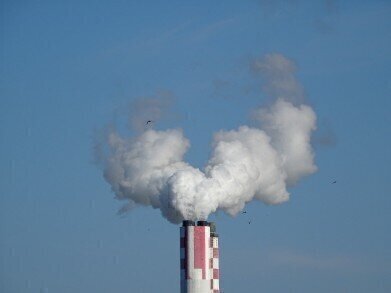Air Monitoring
What Is the European Union's BREF for Combustion Plants?
Feb 28 2021
The EU’s Best Available Techniques Reference Document (BREF) outlines how large combustion plants can comply with the Industrial Emissions Directive (IED), which came into force in 2016. The BREF not only defines the best practices available to plant owners and sets out the steps they must take to ensure they are compliant with the legislation, but also expands upon the range of pollutants encompassed in the directive and elucidates the monitoring requirements necessary to observe performance.
What is the IED?
The IED was first created in 2010, introduced in 2011, implemented for new plants in 2013 and came into force for existing plants from 2016. It aims to control and reduce the emission of harmful gases associated with industrial power plants – including the emission of greenhouse gases across the EU – in order to reduce pollution and mitigate climate change.
The IED applies to all combustion plants with a total thermal input of 50MWth or more and orders them to comply with specific permitted amounts based upon their region of the continent and the best practices available to them as a result. The system works upon a “polluter pays” model, whereby companies must pay a financial penalty for exceeding the limits.
The EU is cognisant that not all companies will have access to the same technologies, depending upon their geographical location, the size of the plant, the operational hours of its day-to-day running and the fuel types it uses. Therefore, plants may apply for an exemption from the IED based upon the techniques that are available to them.
What is the BREF?
Given that such exemptions are possible, it is incumbent upon the EU to provide a detailed framework which elucidates how and where they may be applicable. The BREF is that very document, offering plant owners the information they need to understand the Best Available Techniques that are eligible for use in their particular facility.
By following the guidelines that are laid out in the BREF, companies can ensure compliance with the IED. This is not only beneficial from a legal perspective, but also from an economical and public health one, as well. The IED targets the most polluting industries most heavily, such as coal, which are responsible for greater amounts of contamination and have a subsequent knock-on effect on health and fiscal performance.
Indeed, according to one estimate, delays to the implementation of the BREF have permitted air pollution from large combustion plants that, if it had been avoided through compliance with the legislation, would have saved the EU a cumulative €150 billion in health costs. Not only that, but adherence to the IED via the BREF since the inception of the former would potentially have saved over 55,000 lives that were curtailed as a result of exposure to air pollution.
Digital Edition
IET 34.2 March 2024
April 2024
Gas Detection - Biogas batch fermentation system for laboratory use with automatic gas analysis in real time Water/Wastewater - Upcycling sensors for sustainable nature management - Prist...
View all digital editions
Events
Apr 24 2024 Jakarta, Indonesia
Apr 24 2024 Sao Paulo, Brasil
Apr 30 2024 Melbourne, Australia
Apr 30 2024 Birmingham, UK
May 03 2024 Seoul, South Korea


















